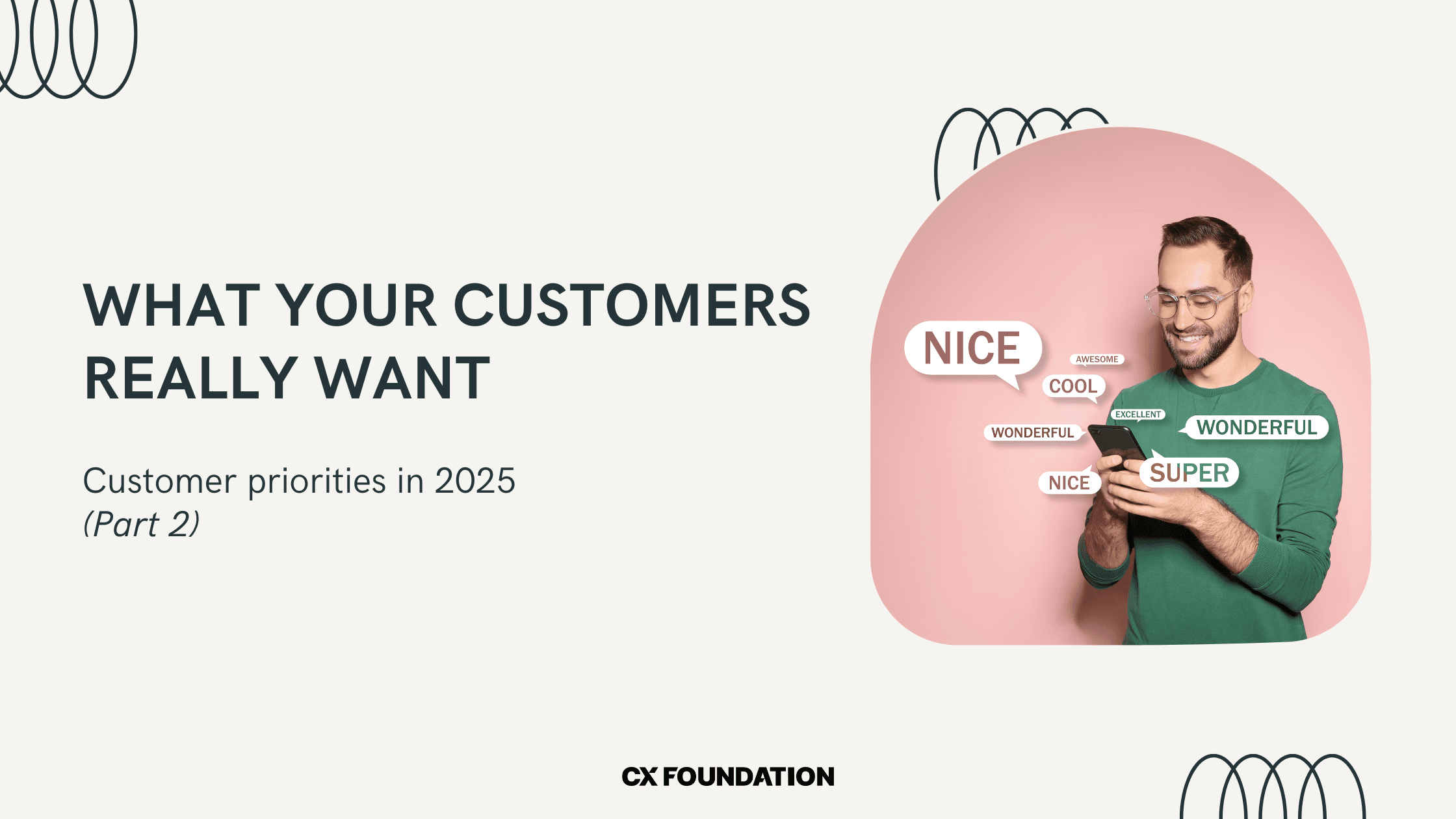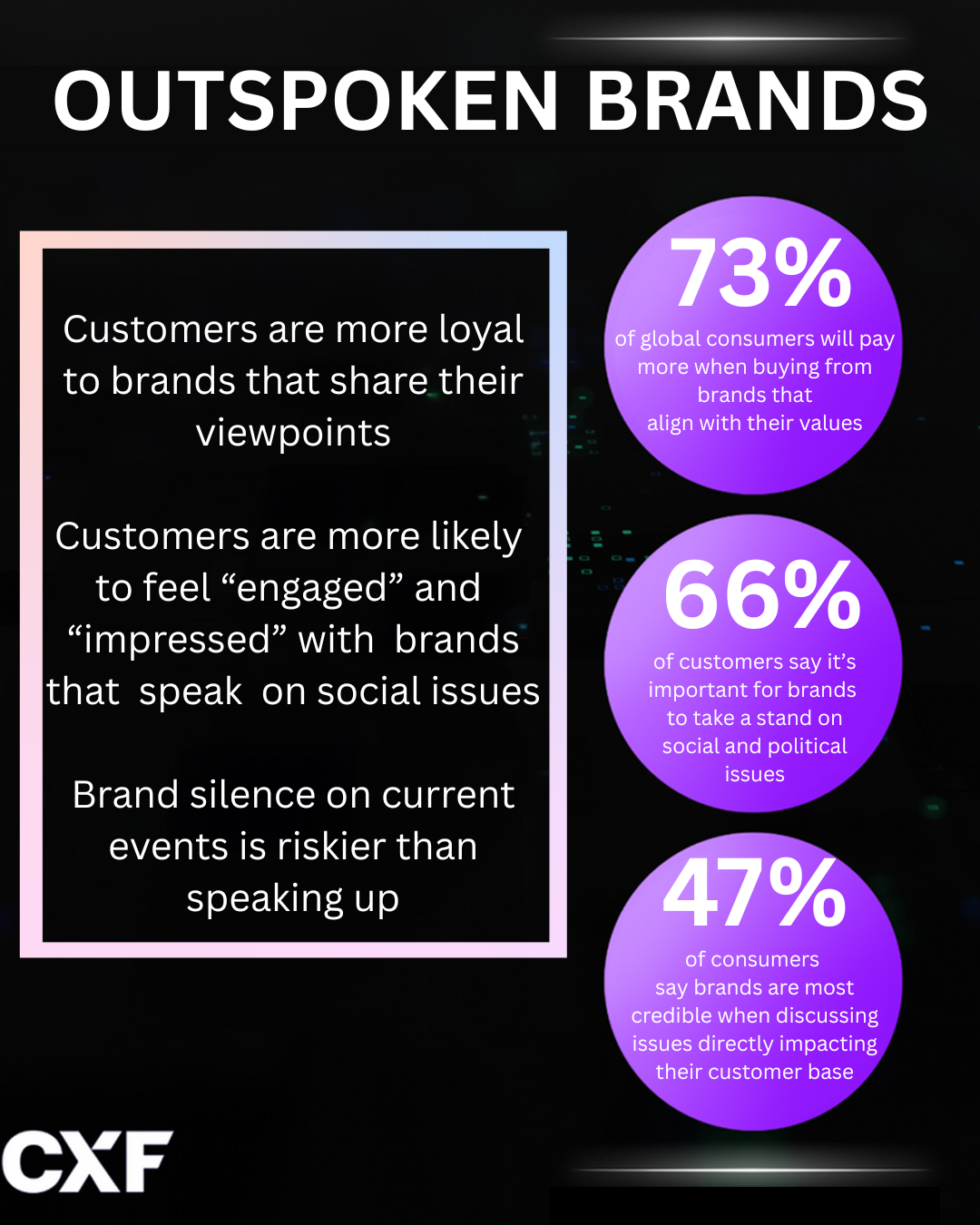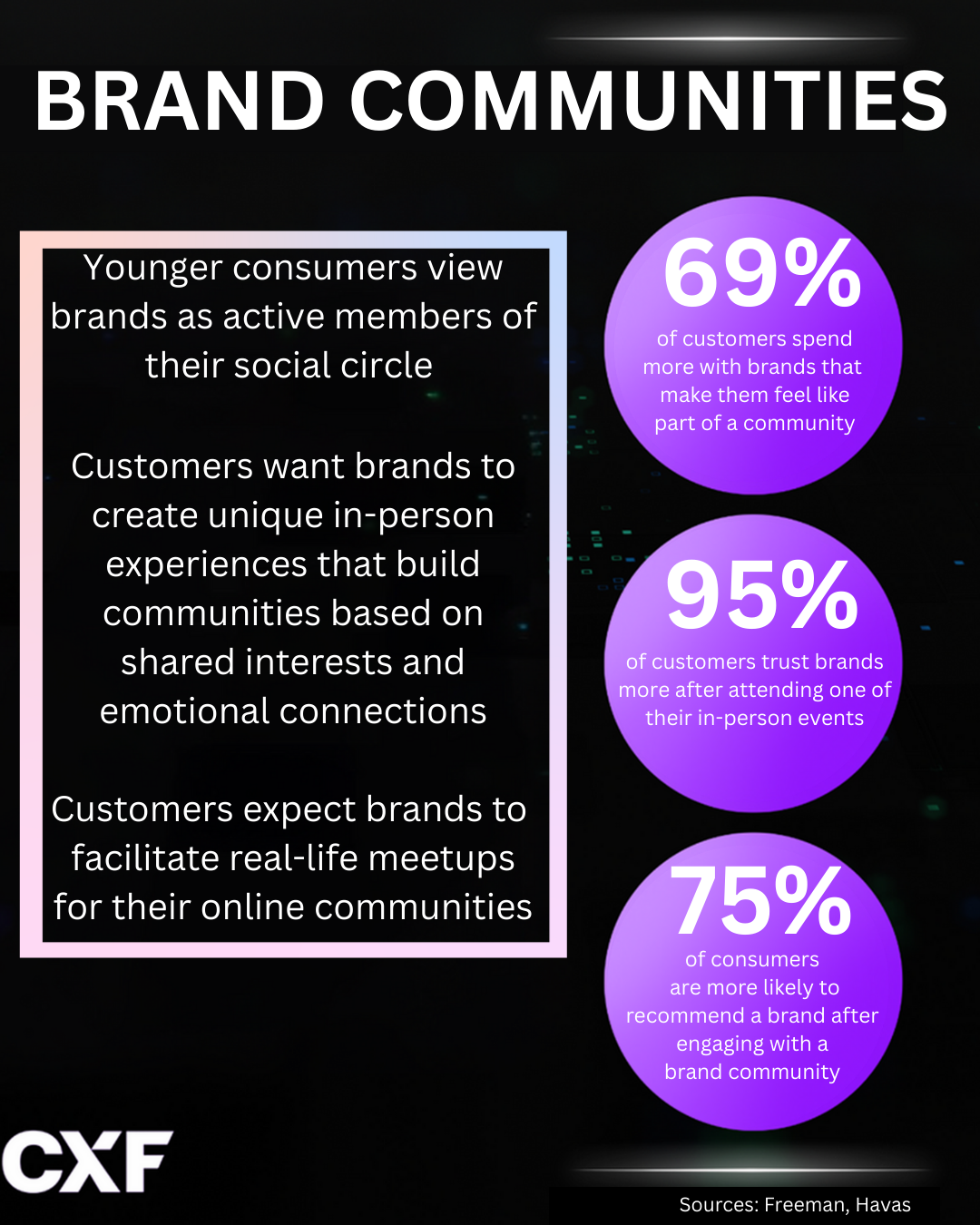August 21, 2025 • 6 min read
What Your Customers REALLY Want: The Top 5 Customer Priorities in 2025, Part Two

CX Analyst & Thought Leader
August 21, 2025

Please note that this piece is the second part in a series. To read Part 1 of this piece, click here.
Quick Recap
I spent months reading over 150 customer experiences and research to find out what customers REALLY want from brands, not just what CX analysts like me tell you they want. I've condensed my findings into a two-part article that defines the top 5 customer priorities in 2025.
The first three priorities -- trust, hyperpersonalization, and a seamless support experience, are more technical. The final two have more to deal with the emotions involved in the customer experience.
4. Outspoken Brands
In 2025, customers want brands to add their voice to the conversation on social and political issues. While the 2024 election year saw most brands shying away from making public statements on current events, customers are ready for companies top break their silence.

Do the benefits of brands speaking up on social issues REALLY outweigh the risks?
Believe it or not, only 12% of American consumers want brands to avoid any kind of political or social statement. And that sentiment is only growing. In 2024, only 38% of Americans wanted brands to speak up on social and political issues – but now, over half say that in 2025, they're disappointed when brands are silent on current events.[*]
This fits in with the rise in consumer demand for transparency surrounding data collection, as well as increased consumer interest in brands championing sustainability.
What’s especially interesting is that Americans from both sides of the political aisle wish brands would speak up more – even if they don’t agree with the viewpoint being expressed. Less than ⅓ of customers would bother to publicly criticize a brand for expressing an opinion that differs from their own. On the other hand, 55% of Americans show greater brand loyalty to companies that share their viewpoint, and 47% buy more from brands precisely because of shared views.[*]
Most customers say they feel "intrigued," “engaged,” or “impressed” when a brand engages with social issues, while less than 10% say they feel “angered” or “combative.”[*]
The lesson here?
SIlence may cost your company more than speaking up ever could.
How can brands “take a stand” without alienating half their customer base?
The challenge of adding your voice to any conversation is that no matter what you say or how you say it, there will always be someone who either outright disagrees with your opinion or who accuses you of being “performative.”
Consumers don’t want your brand to speak out on every issue (and you absolutely shouldn’t.) What they want is for you to speak out on issues that are directly relevant to your brand, your customer base, and your employees.
Today’s consumers aren’t looking to brands to change their opinions on current events. What they want is for brands to provide one quick and clear action they can take to help impact change. Nearly 40% of customers say that when brands speak out, it’s most impactful if they either make donations to related causes, or if they share the specific steps their customers can take to help support related causes.
Where you speak up also matters. Customers overwhelmingly want to hear brands comment on current events via social media. They also want to hear from CEOs directly, not just faceless branded accounts.
As far as topics customers want all brands to weigh in on?
Human rights tops the list, followed by labor laws, gender equality, poverty, education, and the environment.
What Does The Data Say?
- 73% of global customers not only prefer to buy from brands that align with their social and ethical values, they’re also willing to pay more*
- 66% of US consumers say it’s important for brands to take a public stance on social and political issues*
- Consumers want brands to speak out on issues that are directly relevant to their business - 47% believe brands are more credible when they speak on issues that impact their customers, and 40% believe they’re more credible when they speak on issues that impact their employees.*
5. Brand Communities
Blame the after-effects of COVID isolation, blame social media, or blame the fact that many people today just don’t have the time and energy to plan social events like they used to. And instead of heading to the local bar or a meetup event on their own, consumers are increasingly relying on brands to help them expand their social group. They want the companies they love to host in-person events that build and grow brand communities and foster genuine real-world connections.

Are consumers really relying on brands to help them build a social life?
Your customers are not immune from the loneliness epidemic the United States is currently experiencing.
For many customers, a branded virtual or in-person event is the perfect way for them to meet like-minded people that they know share at least one of their interests.
Millennials and Gen Z customers today view their favorite brands as active members of their social circle, and are more likely to make genuine, emotional connections with brands. And like traditional friendships, they expect brands to listen to them, support them, and introduce them to new people. To form lasting and authentic customer relationships, your company, not just your products and services, needs to make their lives better.
In-person events are of particular value, as younger consumers especially want to spend less time connecting virtually and more time making real-life connections off of social media. In-person events also drive consumer trust. 95% of customers say they trust brands more after attending one of their in-person events, and 92% say that live events positively influence their perception of a brand.[*]
What does the data say?
- 69% of consumers say being part of a brand’s community makes them spend more with that brand[*]
- Over 50% of customers value a sense of belonging to a brand’s community[*]
- Nearly ¾ of consumers are more likely to recommend a brand after engaging with its community[*]
Next Tuesday, I'll post a complete recap of the top 5 customer priorities, as well as a list of best practices for how to give customers exactly what they want without sacrificing your budget or reputation.